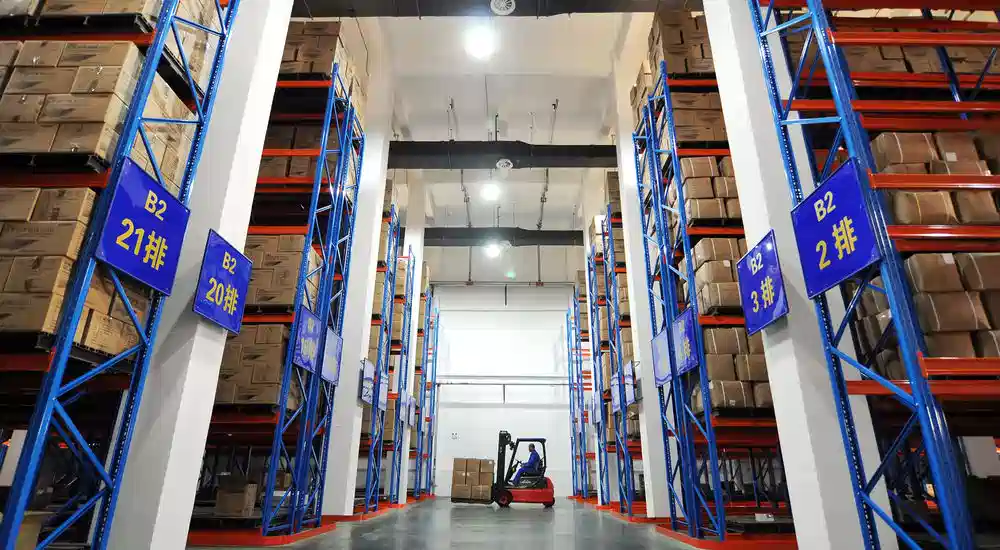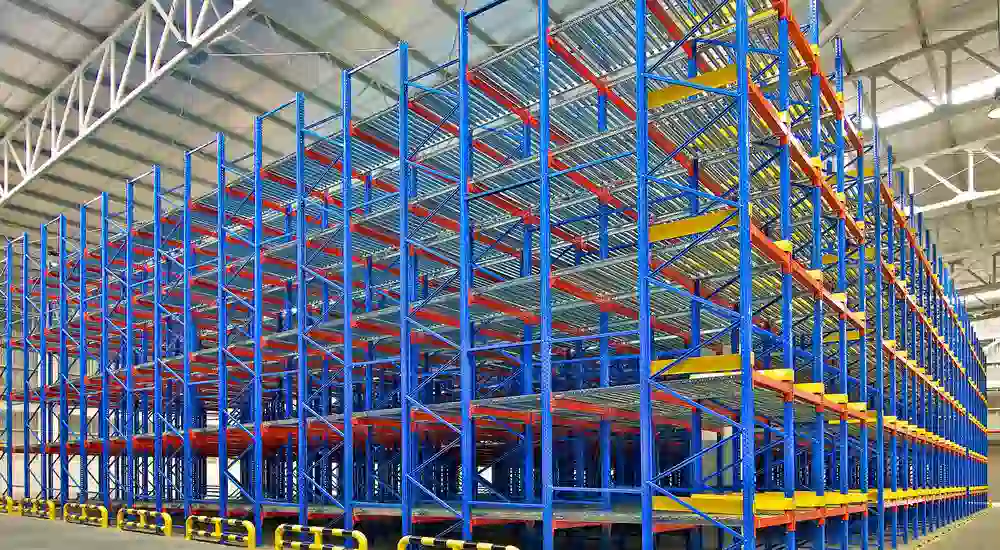Installing a pallet racking system for your warehouse requires a variety of components. Prior to installing one, it is important to have information about these systems for the safety of warehouse personnel. Here we shall explore some facts as explained by the best pallet racking manufacturers.
Pallet racking is a common organizational system used to stack objects in horizontal rows with many levels. In a warehouse, it takes advantage of vertical space by using racks for assisting with storage. Objects stored in these spaces are transported to vehicles and vice versa by means of forklifts or other systems which assist with simple and efficient movement.
What is the purpose of a warehouse pallet racking system?
There are many utilities of a warehouse pallet racking system. Pallet racks allow you to make the most of the storage space in your warehouse. This helps to reduce clutter on your warehouse floor and arrange objects systematically, especially in storage sections with a high density of materials.

Frequently asked questions (FAQs) about warehouse pallet racking
If you are building a racking system for the first time, there are several elements you need to consider. In this section, we will explore answers to some frequently asked questions about pallet racking for warehouses.
Do warehouse pallet racks need to be bolted to the floor?
Yes, all rack columns are required to be bolted to the floor, according to the Rack Manufacturers Institute (RMI). This consists of both aisle columns and rear columns on all frames. All columns need to have a base plate in addition to anchor bolts that satisfy design specifications set out by the RMI. This setup enables pallet racks to stand upright to ensure safety of warehouse personnel.
How high can warehouse pallet racking go?
The Occupational Safety and Health Administration provides guidelines on height limitations for stacking materials on pallet racks in a warehouse. If you are putting racks on top of each other without any assistance from a machine, the height should be a maximum of 16 ft. If you are using a forklift truck, the maximum height of your pallet rack is 20 ft. Regarding the appropriate stacking height for boxes, it varies based on many factors. The length, weight, and height of the box is among them. Also, keeping shorter stacks at the top of pallet racks makes it safer and less hazardous for everyone in the warehouse.
 What factors impact the prices of pallet racking?
What factors impact the prices of pallet racking?
A combination of elements influences the cost of pallet racks for your warehouse. Primarily, your storage requirement influences the number of racks you will need. By looking at a list of all products that are in your warehouse, you can segregate them by weight, delivery frequency, density, and shelf life. In addition, the environment within your warehouse affects the kind of pallet racking you need. If temperature control is a component within your warehouse (such as for cold storage), there will be more associated costs.
Durable and resistant types of pallet racks are essential for preventing accidents in a warehouse. Consider the weight capacity of your racking system and check how adaptable it is for accommodating varying storage needs. In addition, your own budget influences the pallet racking that you can use for your warehouse. Though it might be affordable to choose a low-cost option, pallet racks that come in competitive prices offer more stability and better quality in comparison.
What type of pallet racking system should I utilize in my warehouse?
If your warehouse does not require heavy-density storage, selective pallet racking is the least expensive type that is ideal for this purpose. For a high-density storage need, you can choose between drive-in, push back or pallet flow racks. Both drive-in and push back systems follow the last-in-first-out (LIFO) system of inventory retrieval whereas pallet flow follows the first-in-first-out (FIFO) method.
 Importance of using a pallet racking system in your warehouse
Importance of using a pallet racking system in your warehouse
When you are building a racking system for the first time, it is vital to know some facts about them to make the process relatively easier. Since there are many parts involved in building a resilient pallet racking system, the smallest error can be injurious to people who work in your warehouse. Knowing facts and following guidelines during pallet rack installation minimizes the chances of error and enables managers to make the optimum use of their warehouse spaces.
Adding a pallet racking system to your warehouse or distribution center can make a majorly beneficial impact to your operations. There are many systems that may be integrated after installing a racking system to optimize storage and retrieval as well. SRSI will help you select and design a racking system that meets your unique needs and sustainably supports your growth and success. Give us a call today: (817) 953-8740
 Skip to main content
Skip to main content
 What factors impact the prices of pallet racking?
What factors impact the prices of pallet racking? Importance of using a pallet racking system in your warehouse
Importance of using a pallet racking system in your warehouse





